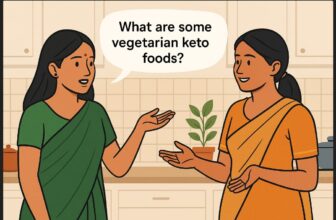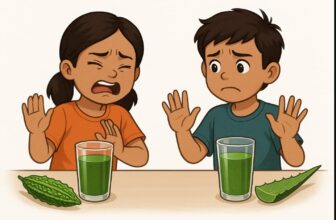If you’ve recently noticed more millet-based snacks, cereals, or flours in your local supermarket, you’re not alone. Across India, millets are making a steady comeback not as a trendy health fad, but as a practical, sustainable, and deeply rooted part of our food system. These small grains, once dismissed as “coarse cereals,” are now being recognized as climate-smart crops that could reshape India’s agricultural future.
But this revival isn’t just about taste or tradition. It’s about resilience. Whether you’re a parent looking for better nutrition, a farmer battling drought, or someone simply trying to eat more consciously, millets connect personal health to national sustainability.
What Makes Millets Unique
- Highly nutritious: Rich in fiber, protein, iron, and micronutrients
- Naturally drought-resistant: Grows in low-rainfall zones
- Pest-tolerant: Needs fewer chemical inputs than rice or wheat
- Eco-friendly: Requires minimal water and preserves soil health
Millets are being recognized not just as a diet choice, but as a tool for climate adaptation, rural empowerment, and long-term food security.
The Bigger Picture: Why Millets Matter for India
Millets grow where other crops fail. In dryland zones like Rajasthan, Telangana, or parts of Madhya Pradesh, these grains require very little water, grow well in poor soils, and survive without chemical fertilizers. Unlike rice and wheat, which dominate subsidized procurement but drain groundwater and need pesticides, millets work with nature.
When you choose millets, you’re supporting biodiversity, helping farmers earn from neglected lands, and cutting down your environmental footprint. And with government support growing stronger like the inclusion of millets in school meals and the PM Poshan scheme this change is reaching everyday households across India.
India’s Millet Revival – More Than Just a Trend
India declared 2023 as the International Year of Millets and backed it with strong policy support.
- Minimum Support Prices (MSP) are now available for key millets like jowar, bajra, and ragi
- PM Poshan Scheme has added millets to school meals in several states
- Urban awareness is rising with millet cafés, health startups, and organic stores featuring millet products
- https://www.mygov.in/campaigns/millets/
This shift goes beyond niche markets millets are now being mainstreamed as a national priority.
Exploring India’s Top 10 Millets
Here’s a closer look at the ten most widely grown millets across India and what makes each of them special.
1. Pearl Millet (Bajra)
If you’ve ever eaten bajra roti in a Rajasthani thali, you already know how deeply rooted this grain is in Indian cuisine. Bajra thrives in the harsh, sandy soils of western India and grows with very little water. It’s a natural source of iron and fiber and helps manage energy levels throughout the day. You’ll find it in winter meals across Gujarat, Maharashtra, and Haryana, where it offers warmth and strength.
2. Finger Millet (Ragi or Nachni)
Mostly grown in Karnataka and Tamil Nadu, ragi is known as one of the richest plant sources of calcium. It’s ideal for growing children, elderly family members, and anyone needing strong bones. From ragi mudde (soft balls) in rural Karnataka to malted ragi drinks in urban homes, this millet blends tradition and nutrition beautifully.
3. Sorghum (Jowar)
Jowar is a powerhouse grain that supports farmers in Maharashtra, Telangana, and parts of Karnataka. You’ll find it shaped into thick rotis called bhakri, often eaten with chutney or curry. With its high protein and antioxidant content, jowar is now also being turned into chips, flakes, and health snacks across Indian metro cities.
4. Foxtail Millet (Kangni or Kakum)
If you’re watching your blood sugar levels, foxtail millet is one of the best grains you can eat. It’s light, easy to digest, and perfect for people with diabetes. Grown largely in Telangana and Andhra Pradesh, it’s now commonly used in pongal, pulao, and even millet upma. Its short growing cycle also makes it a favorite among small farmers.
5. Little Millet (Kutki)
Grown in central Indian states like MP and Chhattisgarh, little millet is often found in tribal kitchens. It’s typically eaten with leafy saag, pickles, or curd. If you’re switching from polished white rice, kutki offers a richer, fiber-filled alternative with a nuttier taste and a better glycemic profile.
6. Barnyard Millet (Sanwa or Sawa)
If you’ve ever fasted during Navratri, you’ve probably eaten barnyard millet without realizing it. It’s commonly used as a rice substitute during fasts and has a very short crop cycle just about 45 days. Mostly grown in Uttarakhand and Himachal, it helps boost iron intake and is ideal for detox meals.
7. Kodo Millet (Kodon)
Kodo millet isn’t widely known in urban India, but it has deep roots in Tamil Nadu and the tribal belts of central India. Its ability to grow on rocky or poor soil with minimal rainfall makes it crucial for marginal farming communities. When cooked, it closely resembles rice and pairs well with South Indian curries or curd.
8. Proso Millet (Cheena)
This millet grows well in Bihar, UP, and parts of Madhya Pradesh. It’s commonly used in porridge or sweet dishes like millet laddoos. Rich in protein and easy on digestion, proso is ideal for kids, the elderly, or anyone recovering from illness.
9. Browntop Millet
Grown in small pockets of Karnataka and Andhra Pradesh, browntop millet is still relatively rare in mainstream markets. But its short crop duration and resilience make it ideal for areas facing erratic rainfall. It helps regulate cholesterol and supports weight management, which is why it’s now popular in diabetic and cardiac diets.
10. Guinea Millet
Largely grown in tribal regions of northeast India and Jharkhand, guinea millet is one of the lesser-known millets. Though used mainly for fodder in some areas, it represents the deep genetic diversity of Indian grains. These varieties could play a bigger role in the future as India looks for crops that can survive extreme weather.
How Millets Help Build a Sustainable Future
Lower Environmental Impact
- Millets consume 70-80% less water than paddy
- Do not require synthetic fertilizers or heavy pesticide use
Soil and Ecosystem Benefits
- Improves soil structure and organic content
- Supports intercropping and sustainable crop cycles
Climate Resilience
- Millets are naturally adapted to heat, drought, and poor soil
- Act as a buffer crop when rice or wheat fail
Energy-Efficient Processing
- Traditional processing needs less energy than polished rice or wheat
- Local processing options reduce carbon footprint
How You Can Include Millets in Your Daily Diet
Millets aren’t just good for farmers or the planet. They’re great for your family’s health. They contain complex carbs that digest slowly, keeping you full longer and maintaining stable energy. They’re gluten-free, making them a safer option for people with gluten sensitivity or celiac disease. And they blend well into Indian cooking.
Millets are no longer limited to rural kitchens. Urban availability has improved, and modern recipes have made them more accessible.
Try These Modern Millet Ideas
- Millet dosa, khichdi, pongal
- Ready-to-cook millet noodles or pasta
- Millet cookies, laddoos, and energy bars
- Use as rice replacement in pulao or biryani
Look for These Sources
- FPOs (Farmer Producer Organizations)
- Organic stores, weekly markets
- Online millet-specific brands (especially those sourcing locally)
A Smarter Grain for a Smarter India
Millets aren’t fancy. They’re familiar. They’re affordable. And they work on your plate, on the farm, and in the fight against climate stress.
When you eat millets, you’re not just switching grains. You’re supporting dryland farmers, reducing water usage, and saying yes to a crop that suits both your health and India’s future. You’re choosing a food system that’s more self-reliant and less damaging to our environment.
Source – https://www.pib.gov.in/PressReleaseIframePage.aspx?PRID=1947884





